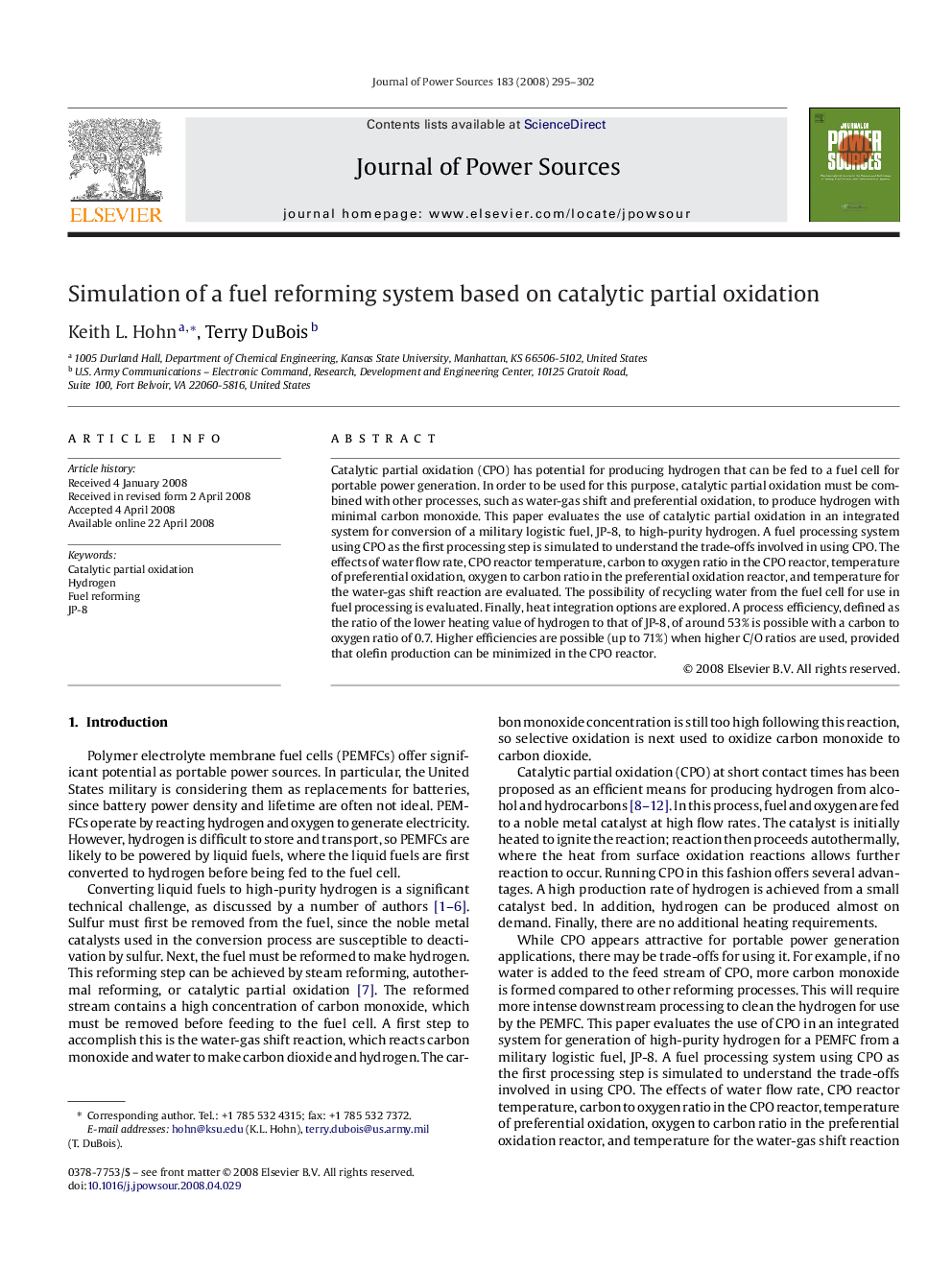| Article ID | Journal | Published Year | Pages | File Type |
|---|---|---|---|---|
| 1285410 | Journal of Power Sources | 2008 | 8 Pages |
Catalytic partial oxidation (CPO) has potential for producing hydrogen that can be fed to a fuel cell for portable power generation. In order to be used for this purpose, catalytic partial oxidation must be combined with other processes, such as water-gas shift and preferential oxidation, to produce hydrogen with minimal carbon monoxide. This paper evaluates the use of catalytic partial oxidation in an integrated system for conversion of a military logistic fuel, JP-8, to high-purity hydrogen. A fuel processing system using CPO as the first processing step is simulated to understand the trade-offs involved in using CPO. The effects of water flow rate, CPO reactor temperature, carbon to oxygen ratio in the CPO reactor, temperature of preferential oxidation, oxygen to carbon ratio in the preferential oxidation reactor, and temperature for the water-gas shift reaction are evaluated. The possibility of recycling water from the fuel cell for use in fuel processing is evaluated. Finally, heat integration options are explored. A process efficiency, defined as the ratio of the lower heating value of hydrogen to that of JP-8, of around 53% is possible with a carbon to oxygen ratio of 0.7. Higher efficiencies are possible (up to 71%) when higher C/O ratios are used, provided that olefin production can be minimized in the CPO reactor.
